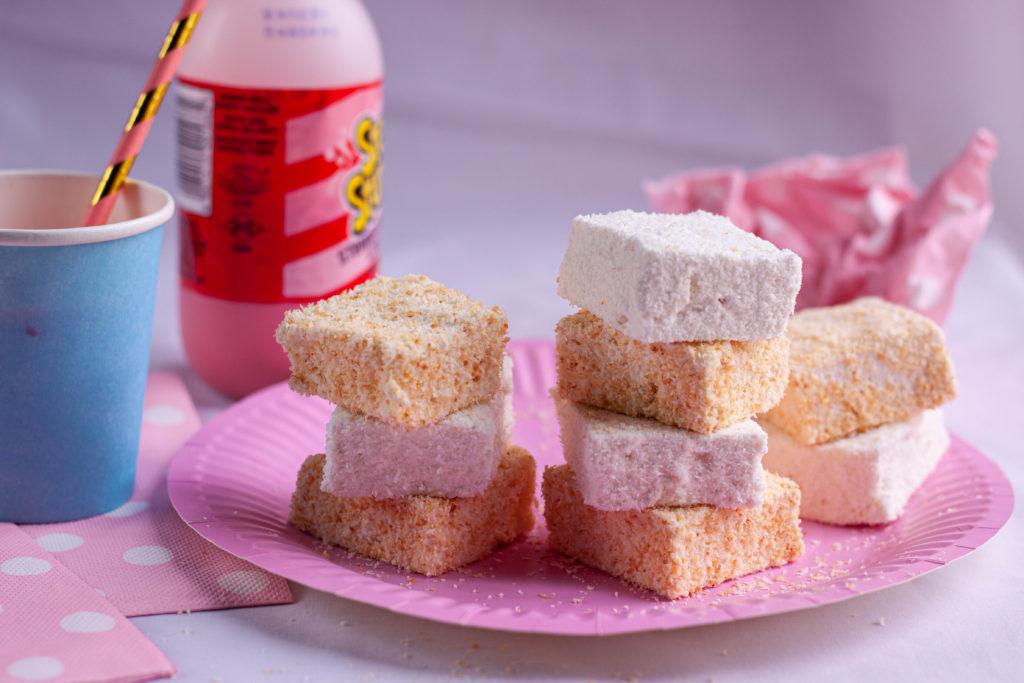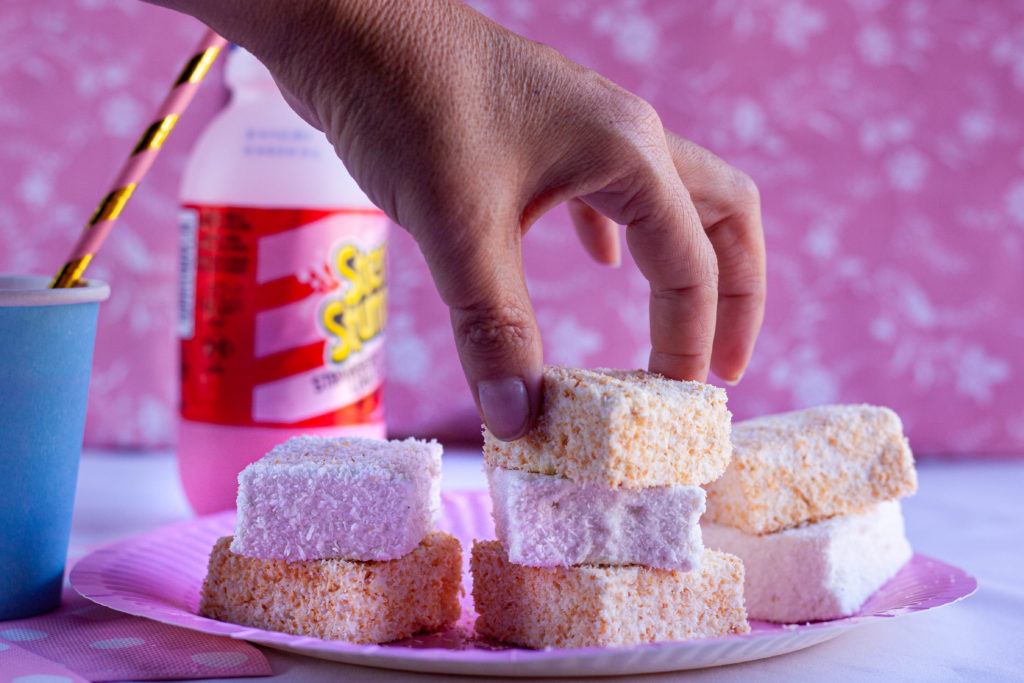It’s like taking a cute random cloud from the sunny sky, putting it in your mouth, and eating it. And then your mouth starts watering and in the blink of an eye, 30 marshmallows are down your throat. This roasted coconut marshmallow recipe will guide you to make soft homemade marshmallows from scratch.
Yes, you do need a thermometer for the best and most consistent results. No, it is not difficult, nor intimidating. It’s as easy as putting a stick into liquid and reading a number on it. But I’ll also tell you how to do it without a thermometer.
Allow me to explain a few concepts to keep in mind when making these marshmallows. Don’t worry, I’ll be brief and won’t write about how my uncle’s dog once ate one of these marshmallows.
So, this marshmallow recipe is (almost) an Italian meringue with gelatine.
A few tips on working with egg whites/meringue
- Older eggs that have been refrigerated for more or less two weeks, produce a better result than fresh eggs. The egg whites become runnier over time, which makes it easier to whip to create more volume. (Although, more recent research shows that fresh egg whites produce a more stable meringue, older egg whites create more volume. We need volume for this recipe.)
- Egg whites should, however, be at room temperature for the best results when making meringues.
- Fat and egg whites are not friends at all. So when separating the eggs, make sure the yolk (fat) does not find its way into the whites. Even a tiny bit of yolk (or any other fat) might cause the whites not to reach their full volume during the whipping process.
- For this recipe, do not overbeat the egg whites before the sugar syrup has been added. Whisk until they hold soft peaks and then stop.
Want to learn more about the chicken egg? Read our in-depth article on the chicken egg.
A few tips on working with gelatine
- Always add gelatine to the liquid to dissolve.
- Never bring gelatine mixtures to boiling point, it will lose its thickening properties. In this recipe, you will have to heat the gelatine a bit, don’t bring it to a boil!
- For this recipe, use water to dissolve the gelatine.

Photo: Hannes Kruger
The sugar syrup
I cook the syrup for this recipe to 106 °C / 223 °F, the “short thread stage”. Traditionally, one would want to cook the syrup to the “soft ball stage” (especially when whipping up an Italian meringue). I find that the marshmallows are too sticky and firm to my liking when I cook the syrup to the “soft ball stage” (115 °C / 240 °F). I prefer them softer and pillowy.
Don’t have a candy thermometer? Do this!
Bring the sugar syrup to a boil and cook for about 10 minutes without stirring. Using a clean spoon, carefully take a little of the syrup and let it cool slightly on the spoon. Using your thumb and forefinger, take a pinch of syrup from the spoon. “Glue” your thumb and forefinger together with the syrup. Pull the two fingers apart. When the syrup forms a soft, loose, short thread, it is ready.
(I must admit, I went totally #yolo with this roasted coconut marshmallow recipe before without testing the syrup or using a thermometer. The end result will be ok, but not consistent with previous (more successful) attempts. It is the gelatine that comes to your rescue and ensures a stable end result if you don’t work accurately with the sugar syrup.)
It may sound difficult with all the fancy talk about 106 °C sugar syrups etc. But it’s actually easy and chances are good that you won’t make a flop.
Method
Step 1
Add gelatine to 30 ml water in a cup. Set aside and let it bloom.
Step 2
In a small saucepan, add the water and then the sugar. Stir to combine. Heat over high heat, stirring only until it comes to a boil. Once it reaches a boil, stop stirring. Cook until sugar syrup registers 106 °C / 223 °F on an instant-read or candy thermometer.
Step 3
Meanwhile, add egg whites to the bowl of a stand mixer fitted with a whisk attachment. On medium speed, whisk egg whites until soft peaks form. When lifted, the head of the mixer should form gentle peaks in the egg whites that very slowly collapse back into themselves. It takes about 1 ½ to 2 minutes.
Step 4
With the mixer running, slowly drizzle in hot sugar syrup. Be careful! Increase speed to high and continue whipping. Quickly and gently heat the gelatine mixture (without bringing it to a boil). I put it in the microwave (on medium) for a few seconds. You need it in liquid form.
Step 5
Add the gelatine liquid, vanilla, and salt to the meringue. Continue whipping on high speed for 10 minutes, giving your mixer a break if needed, until the mixture is thick, (almost soft peaks). It has the same texture and consistency as marshmallow fluff.
Step 6
While the marshmallow mixture is whipping, grease a rectangular glass dish (see notes for size). I use cooking spray. Once the whipping is done, add the mixture into the dish. Cover and place in fridge to set, about 4 hours.
Step 7
In a large frying pan, roast the coconut over low heat, stirring frequently, until brown. Let it cool down. Once the marshmallow mixture has set, cut into equally sized squares and roll in coconut. Store in an airtight container, preferably in the fridge.

How useful was this post?
Click on a star to rate it!
Average rating 5 / 5. Vote count: 10
No votes so far! Be the first to rate this post.

